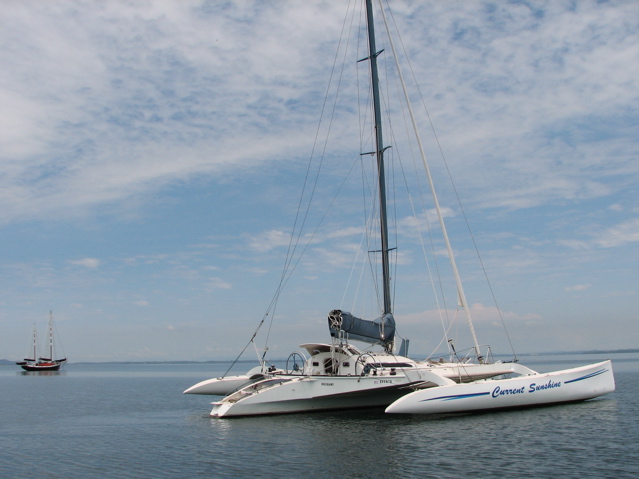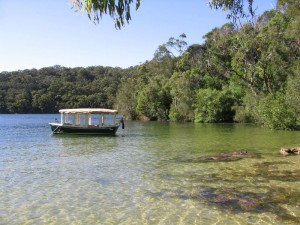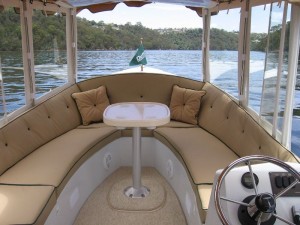Careel boatyard has lent me a small dinghy to make it easier to come and go outside office hours. The Torqeedo 801 works well on it – its a hard bottom dinghy and scoots through the water nicely. Unlike my inflatable avon which doesn’t have a transom for stiffness and tends to bend a lot under the force of the motor. As well it has a soft bottom and just doesn’t allow any speed.
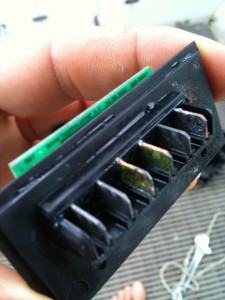
I went ashore with plans to put some buffers on the dinghy – using some so-called noodles which are used as flotation in swimming pools. I needed some more stuff from the boat for this project and went back out just to pick them up. I was only on board for a few minutes and ready to return and noticed the dinghy is motorless!
The was a little wind and a small chop coming across from the west – surely that could not have dislodged the 801? And only yesterday I checked the screw clamps for tension as I was coming in to the dock. How could they have come loose in that short time?
But something surely has because there’s clearly no motor on the dinghy. When the water is still I can easily see the bottom and all the crayfish holes in the sand. But today the chop is enough to stir up the water enough not to be able to see the bottom. Somewhere down there is a Torqeedo 801.
I launched the avon and tethered it behind Current Sunshine because its easy to get into from the water. Then with wetsuit, goggles and fins started to search. Snorkling on the top was not good enough – I still could not see the bottom clearly.

The depth sounder usually shows around 4m at this mooring and the tide is low so perhaps the depth is even a little less than this. By diving just below the surface I can see the bottom clearly now but no sign of that bright orange and black motor.
But I know it must be somewhere on the swing circle of the dinghy trailing out behind the tri. The wind is still variable and so she’s still swinging along the circumference and back again allowing me to trace the arc of possibility with duck dives.
My ears don’t like this and complain about even this shallow depth – I’d starve as a pearl diver huh?
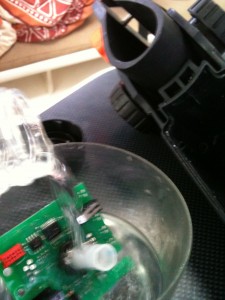
But there’s the motor on the edge of my vision – its seems so clear now I’m close. There’s a wispy stream of fine bubbles rising up from the battery. Salt water is a good conductor and who knows what interesting chemistry is being cooked up down here as the battery dumps its electrons. I grab the motor and wonder how heavy it will feel when I reach the surface – buts its light enough and I push it over the gun’l of the hard dinghy. Then flop into the avon. It didn’t take long – maybe I was five minutes at most in the water.
That means the motor could have been submerged for perhaps 15 to 20 minutes.
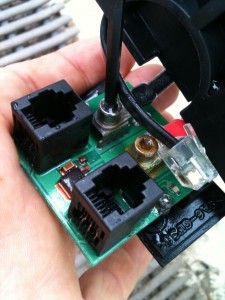
On board now and the water that pours out of the battery is green. I wonder is that chlorine? After all salt is just sodium chloride and perhaps the stream of bubbles coming out of the battery was chlorine gas? I pour fresh water over the motor controller and the battery. The fresh water comes out green also. I suspect the battery is cooked.
I have a little metho (methylated spirits or alcohol) available and tip that into the tiller arm (which has the throttle control) and into the top of the motor where I know there is a circuit board. But I have no torx screwdriver long enough to get at the screw.
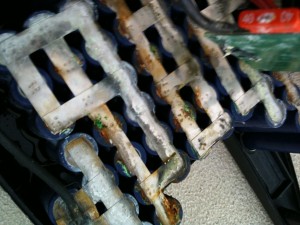
To shore and then to the hardware shop and back takes a long hour, and I can begin pulling things apart and washing them in alcohol. The circuit boards from the top of motor and the tiller arm look in good condition. Even so the red terminal shows some oxidation on front and back. Perhaps there was a current was flowing through this terminal.
After seeing the green water flow out of the battery I suspected the worst and so left it to last – thinking it was probably beyond resuscitation. So the other circuit boards got my first attention. Perhaps they’ll still be working.
But after opening the battery… well take a look yourself. Its not pretty.
Its still a mystery how it could have flipped off the dinghy. I checked the bracket and it was only just snug and could be lifted off the transom. It doesn’t make sense that the screws could have come undone. But then again, the transom is made of a couple of layers and was flexing under the load of the motor. Could its delamination have allowed it to loosen and shrink a little?
Soon after the dunking I was below and a skiff sailed really close by as though using this boat as a mark. I guess it possible that someone like that has come too close and dislodged the motor. But surely I would have heard that…
But the mystery remains. And now what to do about getting it fixed? Luckily I have insurance.
